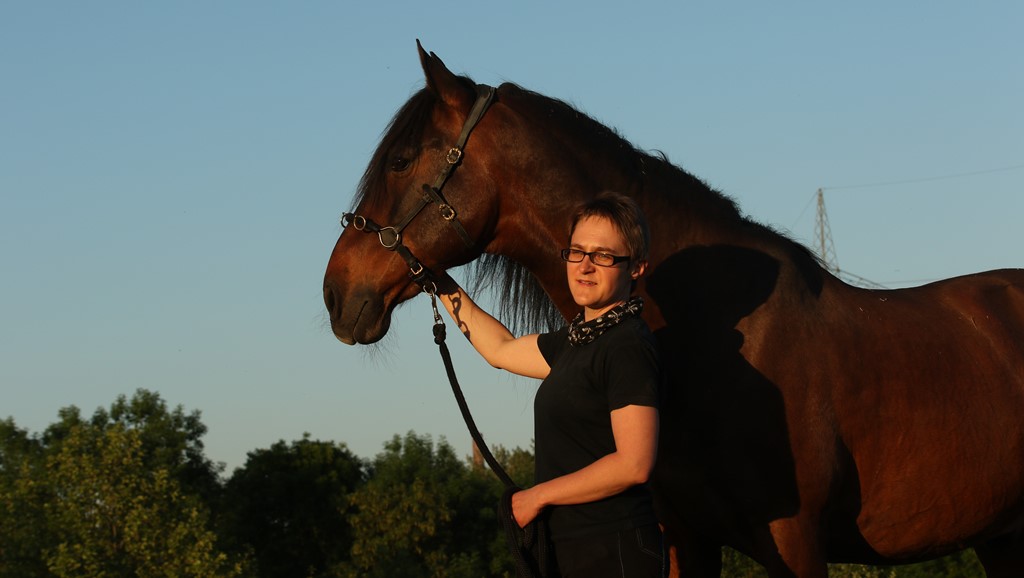News: Interview with Transcriber “Dilla”
Bochum, June 16, 2020
• Bochum, June 16, 2020 •
Our project relies on the contributions of experts from a variety of communities—from families who share their letters and their genealogical research with us to archivists and librarians at historical institutions who provide resources from their collections to volunteer “citizen scientists” who use Scripto, our transcription platform, to create machine-readable texts from letters in our collection written in Kurrentschrift or modern cursive handwriting. We asked one of our most active volunteer transcribers, Sonja Thiele, who goes by the user name “Dilla,” to tell us more about what drew her to German Heritage in Letters, and what she imagines visitors and researchers will learn from the materials she is helping us share. To sign up to become a transcriber, visit our Scripto page!
Interview and translation by Betty Schaumburg (auf deutsch)
1. Could you tell us a little about yourself and how you became interested in being a “citizen scientist”?
My name is Sonja Thiele, I'm 41 years old and I live in Bochum, a big city in the Ruhr district, Germany’s main coal mining and heavy industry center for most of the 20th century and now a very dynamic and still changing region. I work as a pharmacist in a public retail pharmacy, but I always had an interest in history. A few years ago, I read a newspaper article about online volunteering and decided to try it out. I think it’s a good, flexible way to be a volunteer without having to be in a certain place at a certain time. I’ve always loved puzzles and I discovered I had a talent for “deciphering” old letters and documents—as a pharmacist, I’m used to reading lousy handwriting, after all; we still get handwritten prescriptions pretty often.
2. What are some of your “tricks” for reading Kurrentschrift and what drew you to the German Heritage in Letters project in particular?
A talent for riddles certainly helps when it comes to reading Kurrentschrift—when I started trying to transcribe texts written in Kurrent my first impression was: this is almost illegible! But my second thought was: it is not impossible to learn how to read this—millions of people in the 19th century were able to do it, after all! So, it was mostly learning by doing, with the help of a Kurrent alphabet, to see how individual letters were supposed to be written. Being a native speaker/reader is also a great advantage, because it makes it much easier to figure out words if you can imagine which words might make sense and fit into the context. Every time I start with a new writer it’s a new challenge—when I transcribe a series of letters written by the same person, it takes a few pages to become familiar with the characteristics and peculiarities of their handwriting. When I was a student in pharmacy school, I had the opportunity to do an internship in a community pharmacy in central Iowa and had a really great time in the U.S.— that makes me enjoy working on American or German-American projects on immigration history even more!
3. What have you found most interesting as you’ve been reading and transcribing the German Heritage in Letters correspondence?
Letters show history from another point of view because they show the living reality of somebody who lived in the past—the people in these letters live in a very different world, with different habits and customs; they followed different social norms and believed different things. What seems most unusual from our modern point of view is the structure of society in the 19th century and its rules and norms, for example the division of roles between men and women, or the fact that many better-off families had household servants. And yet there is so much that sounds familiar—the general descriptions of human relationships, gossip, and everyday problems are more or less the same as today. People care for their loved ones, worry about their children and their future, make plans for celebrations and holidays, and complain about the weather, money worries, and health problems.
4. How do you imagine the German Heritage in Letters transcriptions being used for research?
Letters from the past can be an interesting source for researchers from many fields—for example, linguists can study grammar and spelling, and their development over time. But most of all, letters can be useful for historians because they show the past from a different angle: one particular person's point of view. Contemporaries’ comments and evaluations can help researchers get a broader picture of events—for example, in Marie Hansen Taylor’s account of the 1876 Centennial Exhibition in Philadelphia and her descriptions of Vassar College and student life there in its early days. The letters give so much insight into life in the 19th century, what people's interests and worries were, and how they mastered the challenges of their daily lives. After a few letters, it was a little like knowing the family members personally—somehow you really start to care for them although you know they passed away a long time ago. I am almost a little sorry when a set of letters comes to an end and I don’t know more about the family’s lives afterward.
5. What are some of your other interests and hobbies?
I really like squirrels! I picked my user name “Dilla” as an abbreviation for “Ardilla,” the Spanish word for squirrel. But my most important and favorite hobby is my horses—my free days and my holidays are usually dedicated to rides around Bochum and surrounding areas, or going on trail rides in Germany and elsewhere in Europe, the best way to relax!
